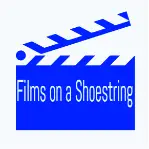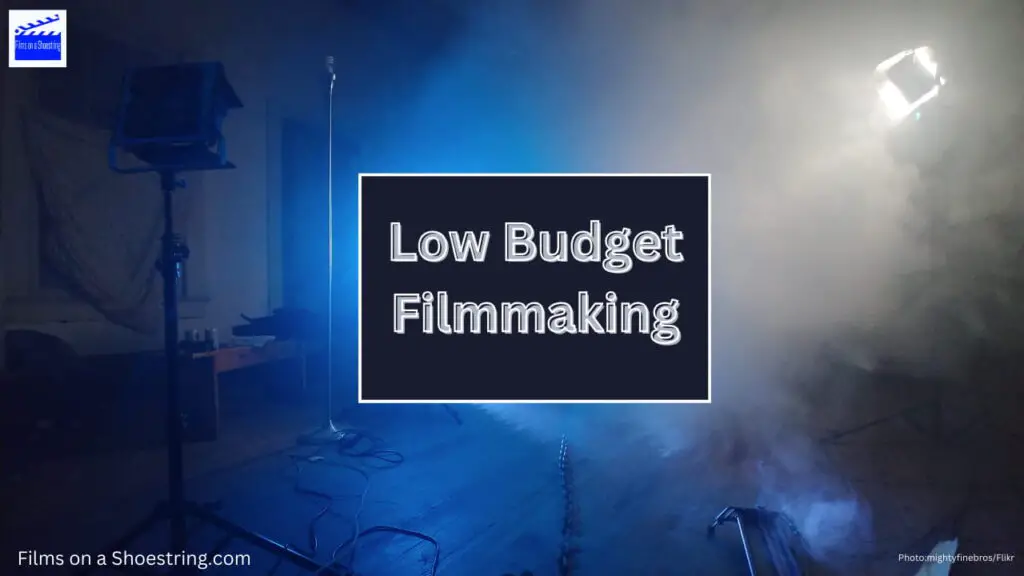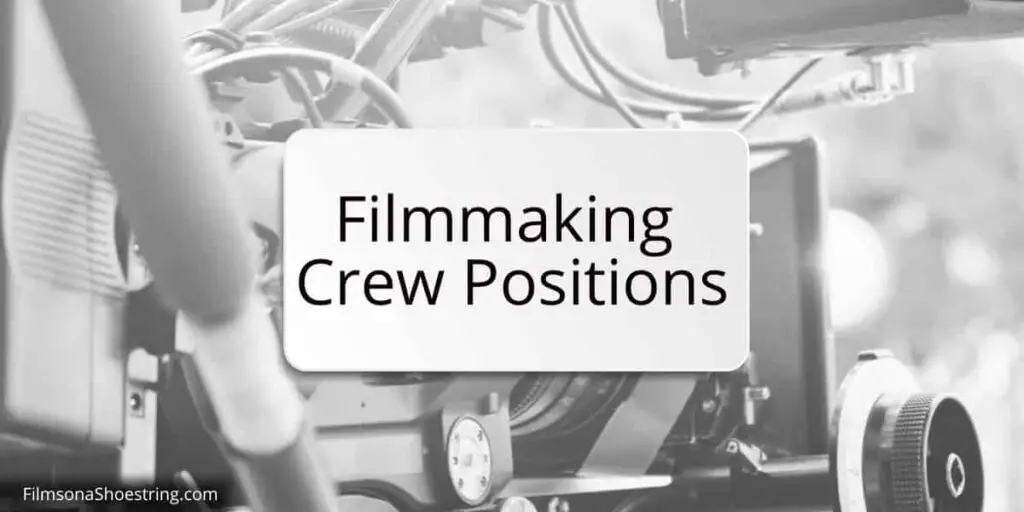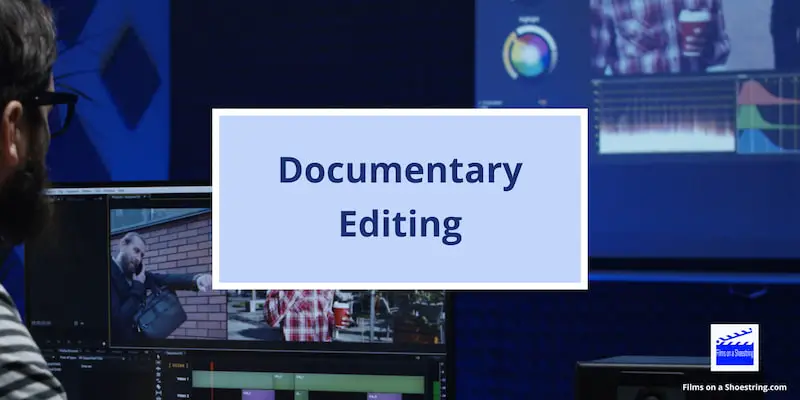Film script structure starts with the overall shape of your story. The order of events are revealed with purpose, defining causal relationships and shaping a view of the world and our societies.
In this article we’ll take a look at
- Three Act Structure
- Real Time Structure
- Multiple Timeline Structure
- Hyperlink Cinema Structure
- Fabula and Syuzhet Structure
- Backwards Structure
- Repetition Structure
- Circular Narrative Structure
- Non-Linear Time Structure
- Oneiric Structure
© Films On A Shoestring .com
10 Best Structured Movies of All Time
Let’s start by taking an entertaining look at different approaches of film script structure with video examples.
10 Best Structured Movies of All Time: CineFix (YouTube)
How do you structure a script?
When you structure a script, you decide which events to include in your story, and the order in which they are shown. The chronological three act structure is commonly used, with setup, conflict and resolution. But you actually have a wide array of film script structures to choose from.
Theme, character and plot are essential elements of any film script. But right now we’re just looking at the structure and how playing about with your script timeline can be used to good dramatic effect.
Under the description of each film script structure you’ll find a list of film structure examples, along with the year the movie was released.
© Films On A Shoestring .com
The Three Act Structure
Remember how you first learnt about structure for storytelling in school? There’s a beginning, a middle and an end. Add depth to this for film writing, and it becomes setup, conflict and resolution.
The Three Act structure in a movie is:
- The first act is the setup, locking the hero into a situation of conflict
- In the second act, the hero deals with confrontation and conflict
- The third act sees the hero overcome a final major hurdle, giving resolution
“Key here is causality, each moment and act forces the story forward”
10 Best Structured Movies of All Time: CineFix
Examples of a Three Act structure film include:
- Jaws (1975)
- Star Wars (1977)
- Raiders of the Lost Ark (1981)
- Back to the Future (1985)
- Witness (1985)
- Die Hard (1988)
- The Fugitive (1993)
Real Time Structure
Some films present their story in a continuous stream.
Think of classic film 12 Angry Men, entirely set in the jurors’ room.
Or High Noon, where Marshal Will Kane’s life keeps the audience engaged as time ticks on towards the showdown.
Although it’s a simple concept, the real time structure is very difficult to execute well.
Examples where the real time film script structure was used:
- Rope (1948)
- High Noon (1952)
- Twelve Angry Men (1957)
- Fail Safe (1964)
- Tape (2001)
- Before Sunset (2004)
- United 93 (2006)
© Films On A Shoestring .com
© Films On A Shoestring .com
Multiple Timeline Structure
The multiple timeline structure involves interweaving the storylines of two or more characters in one film script.
Think of Cloud Atlas, the movie adapted from David Mitchell’s 2004 novel of the same name. The characters’ lives are set hundreds of years apart, and their stories can be enjoyed in their own right. But the multiple timeline structure adds emotional depth.
Examples of the multiple timeline structure:
- Intolerance (1916)
- The Godfather: Part II (1974)
- The Fountain (2006)
- Días de gracia (2011)
- Cloud Atlas (2012)
© Films On A Shoestring .com
Hyperlink Cinema Structure
The film script structure known as hyperlink cinema involves several known – or later revealed – events happening, each setting off a chain of causal events, then the different chains of causal events mixing, conflicting and merging.
The network of events in hyperlink cinema is a great structure to bring out themes about society, such as issues of interdependency or the ongoing consequences of violence.
Examples of the Hyperlink Cinema Structure:
- Kanchenjungha (1962)
- Amarcord (1973)
- Nashville (1975)
- Short Cuts (1993)
- Amores Perros (2000)
- 21 Grams (2003)
- Paris, je t’aime (2006)
- Babel (2006)
- Ajami (2009)
© Films On A Shoestring .com
Fabula and Syuzhet Structure
Fabula is the Latin word for a play or drama. Today we use the word cinematically with fabula meaning the events of the story.
Fabula came out of Russian formalism, a school of literary criticism that flourished in Russia between 1910 and 1930. Another term that also survives from this time is Syuzhet.
Syuzhet is a Russian formalism word meaning ‘the way a story is organised’.
Film script structure looks at how the fabula is represented in the syuzhet. The syuzhet is often moved about – just think how many films you’ve seen with a flashback narrative. It starts with the end, then jumps to the start and builds towards the middle.
Citizen Kane, for example, opens with an extremely wealthy man about to die, whispering the name Rosebud. We then watch a reporter trying to solve the mystery behind Rosebud, by unearthing events from the past.
Other good examples of this film script structure are:
- Citizen Kane (1941)
- All About Eve (1950)
- Goodfellas (1990)
- Forrest Gump (1994)
- Casino (1995)
- American Beauty (1999)
- Fight Club (1999)
- Melancholia (2011)
© Films On A Shoestring .com
Backwards Structure
A film script structure moving backwards also plays with the narrative structure, again putting the emphasis on ‘how did we get here?’ rather than ‘what is going to happen at the end?’
But in the backwards structure, the beginning comes last. So a significant event which preceded all the action is only revealed to the audience at the end.
Good examples of films using the backwards structure:
- Betrayal (1983)
- Peppermint Candy (1999)
- Memento (2000)
- Irréversible (2002)
- Eternal Sunshine of the Spotless Mind (2004)
- Five Times Two (2004)
© Films On A Shoestring .com
Repetition Structure
Creating a film script structure around the principle of repetition, but with differences each time, can be a powerful storytelling technique in cinema.
In Rashomon, the 1950 Jidaigeki psychological thriller/crime film directed by Akira Kurosawa, four individuals tell their version of what happened to the Samurai found dead in the woods. Except, of course, as each tells their story about the same event, we see a different truth emerge. Which one should we believe?
Examples of film script structure using repetition:
- Rashômon (1950)
- Last Year at Marienbad (1961)
- JFK (1991)
- Run Lola Run (1998)
- Go (1999)
- Hero (2002)
- Basic (2003)
- Inland Empire (2006)
- Mr. Nobody (2009)
© Films On A Shoestring .com
Circular Narrative Structure in Film
Circular narratives are a loop of events and consequences which typically involve time travel.
But in Before the Rain, the circular narrative is used for the theme that human nature is inescapable. Violence and love are their own cause and effect, to the extent that the three parts could be reordered.
Examples of films using circular narrative structure:
- Dead of Night (1945)
- Before the Rain (1994)
- Lost Highway (1997)
- Inside Llewyn Davis (2013)
© Films On A Shoestring .com
Non-Linear Time Structure
The non-linear time structure moves the Syuzhet around in all manner of directions. The audience watches a life, relationship, or event from many different angles. The events may or may not be caused by preceding events. Instead of understanding more about causality, we have a deeper insight into the characters within those events.
Famous examples of the non-linear time structure:
- Slaughterhouse-Five (1972)
- Annie Hall (1977)
- Mishima: A Life in Four Chapters (1985)
- Reservoir Dogs (1992)
- Pulp Fiction (1994)
- The Sweet Hereafter (1997)
- 500 Days of Summer (2009)
© Films On A Shoestring .com
Oneiric Structure
Dreams, memories, human consciousness, and emotional association drive the oneiric structure, rather than causational events.
In the dreamlike memoir of The Mirror(1975), time moves backwards and forwards in these glimpses from a life. But there is no fabula, only the telling of the dreams, memories and emotional associations.
Movie examples of Oneiric Structure:
- 8½ (1963)
- The Phantom of Liberty (1974)
- The Mirror (1975)
- Enter the Void (2009)
- The Tree of Life (2011)
© Films On A Shoestring .com
Ready to make a short film?
Take a look at our top tips to prepare for shooting a short film.





